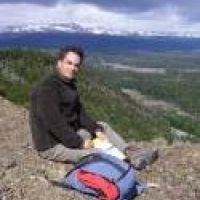ARCHIVED CONTENT: In December 2020, the CZO program was succeeded by the Critical Zone Collaborative Network (CZ Net)
×
Wang et al., 2018
Radiocarbon and Stable Carbon Isotopes of Labile and Inert Organic Carbon in the Critical Zone Observatory in Illinois, USA
Wang, H., Stumpf, A.J., and Kumar, P. (2018)
Radiocarbon
-
IML, INVESTIGATOR
-
IML, INVESTIGATOR
Abstract
We applied the high temperature pyrolysis-combustion technique to partition the total soil organic carbon (SOC) into labile and inert carbon pools for accelerator mass spectrometry radiocarbon (AMS 14C) dating and stable carbon isotope (δ13C), SOC, and carbonate carbon (CC) content analyses to examine SOC variability at a Critical Zone Observatory site in Illinois, USA. The AMS 14C dates of labile and inert carbon in the top 1.55m overlap except in the Bt horizon. Below 1.55 m the labile carbon is younger by 8000–14,800 years. The SOC content decreases from 3.61% to 0.12% and CC content increases from 0% to 19.16% at this depth. Results indicate that SOC production exceeds its loss in the weathering zone causing a continuous turnover of both SOC pools. A small amount of modern SOC infiltrates into deeper sediment below 1.55 m, making the labile carbon pool much younger. Their difference of AMS 14C contents, ΔF14C, reveals 3−5% more modern carbon in the labile SOC pools except in the Bt horizon, further quantifying that <3−5% modern carbon with potential pollutants is translocated into the unweathered sediments. The δ13C reveals the sources for SOC cycling dynamics in both carbon pools at this site.
Citation
Wang, H., Stumpf, A.J., and Kumar, P. (2018): Radiocarbon and Stable Carbon Isotopes of Labile and Inert Organic Carbon in the Critical Zone Observatory in Illinois, USA. Radiocarbon. DOI: doi.org/10.1017/RDC.2018.31
 This Paper/Book acknowledges NSF CZO grant support.
This Paper/Book acknowledges NSF CZO grant support.
Explore Further


